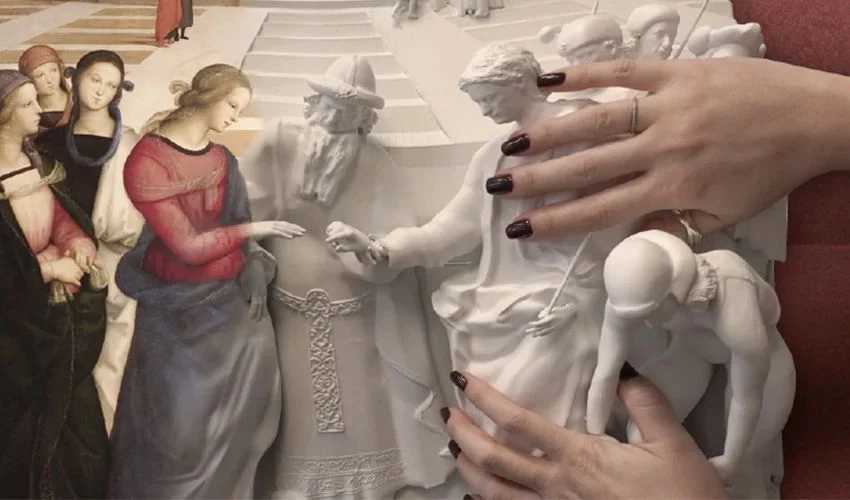“They are our eyes,” said Karin with joy, releasing the arm of one of the specialized “image whisperers” who had just guided her through the International Red Cross and Red Crescent Museum in Geneva.
Since late last year, the museum has been offering this innovative service, allowing visually impaired visitors to experience art and history through detailed verbal descriptions. On the last Sunday in March, Karin—who lost her sight as a teenager—was among four blind visitors exploring the museum with the help of these trained guides.
“It was great! Just a wonderful experience, a wonderful encounter,” she said, thrilled with her guide, Alice Baronnet.
Baronnet, a museum spokeswoman, was one of nearly 30 art specialists, guides, and artists who underwent extensive training to become “image whisperers.” The initiative, she emphasized, is a crucial step toward inclusivity.
“It’s very important for us to be as inclusive as possible,” Baronnet told AFP.

During the visit, each pair moved freely through the exhibits. In a dimly lit room with black walls, Waltraud Quiblier, a retired teacher who gradually lost her sight, listened intently to her whisperer, Cecile Crassier Mokdad.
Holding Quiblier’s arm, Crassier Mokdad described the scene in vivid detail.
“There’s a large sculpture of Red Cross founder Henry Dunant, sitting at his desk on an inclined plane,” she narrated. “The sculpture is all white. It’s quite realistic.”
Further along, she guided Quiblier’s hand toward a three-meter-tall, off-white foot, explaining the projected images of war horrors beneath it. “You have to say what you see, but also leave room for interpretation,” she explained.
Currently, around a dozen cultural institutions in Switzerland have embraced this service pioneered by the Red Cross Museum.
A Deeper Understanding
For Marie-Fabienne Aymon, an art historian stepping into the whisperer role for the second time, the experience was profound.
“Aside from the human connection, it’s the relationship between words and the visible that fascinates me,” she said. “How do I translate what I see into words for someone who can’t?”
As she guided Nicolas Frachet, a blind visitor, through a room filled with handcrafted objects made by prisoners of war, she shared her emotions openly.
“These are deeply moving,” she whispered. She pointed out “a vibrantly colored motorcycle, crafted in Indonesia in 2007 from old cigarette packs,” and “a delicate snake made of beads, assembled by Turkish prisoners in 1919.”
Transforming Museum Visits

Frachet, who has a slight perception of light, found the experience richer than his previous encounters with volunteer guides.
“She provides a deeper description. She’s more specialized,” he said.
For Olivier Mamini, who explored a temporary exhibit on the intersection of sound and humanitarian action, the whisperers were game-changers.
“If it hadn’t been for them, I don’t think I would have come,” he admitted. “I do a lot of sports, but now, thanks to the whisperers, I’m going to visit more museums.”
Embracing Diversity, Equity, and Inclusion
Antoine Possa, head of the museum’s cultural participation program, sees the whisperers as essential to the institution’s commitment to diversity, equity, and inclusion (DEI). However, he expressed concern over the growing backlash against DEI policies worldwide, particularly in the wake of U.S. President Donald Trump’s return to office.
“It’s disheartening to see institutions caving to pressure to eliminate DEI policies,” he said. “I hope those corporations that have abandoned inclusivity will reverse course. That’s not how we move the world forward.”
In Geneva, at least, the future of accessible cultural experiences remains bright—one whispered description at a time.
















